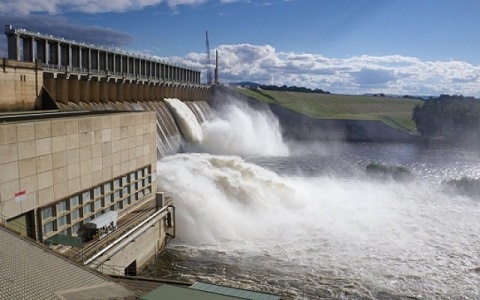- estimated 2000 farmers affected
- cereal, grain farms in ruin
About 3,000 hectares of farmland has been damaged and ruined, with an estimated 2,000 farmers being negatively impacted by the ongoing spillage of the Bagre Dam, monitoring done by the Peasant Farmers Association (PFAG) has confirmed.
“Our current observation indicates that 3,000 hectares of farmland for maize, rice, sorghum and millet is under water, with about 2,000 farmers being impacted by the spillage. The amount of hectarage could double by end of September, with more risk for farmers,” PFAG’s Head of Programmes and Advocacy, Dr. Charles Nyaaba, told the B&FT.
The Association said farmers are looking for lasting solutions to the spillage and not the makeshift results which have become annual rituals by successive governments. These makeshift solutions, according to PFAG, only escalate the threat to food security in the long-term.
The problem
Construction of the Pwalugu multi-purpose dam was meant to ensure that the spillage of Bagre is effectively contained to avert the annual flooding and crisis in the area.
But apart from the sod-cutting that was done on the site in 2019, construction of the estimated US$993million dam – which was projected to be completed in 2023 – is yet to begin.
When completed, it is anticipated that the multi-purpose dam will provide an irrigation scheme covering an area of 25,000 hectares and improve water supply to the northern part of the country.
But the project’s delay, the PFAG noted, calls for concern as farmers have become apprehensive about its future and viability.
“If nothing is done immediately, 2023 will come and we’ll still be in the same situation – watching our farms being ruined by the spillage every year,” Dr. Nyaaba lamented.
Immediate action/concern
Last week, government through the National Disaster Management Organisation (NADMO) deployed personnel in the area to assess the situation in order to proffer a short-term mitigation measure.
Suggested solutions by PFAG
The PFAG has suggested that government prioritises agriculture in its engagement with the International Monetary Fund (IMF), to devote substantial gains from the bailout to constructing the Pwalugu Dam.
The PFAG believes that the dam’s construction will not only address the flooding situation and concerns of farmers in the area, but also contribute significantly to the national food security agenda.
Indeed, the Tono irrigation scheme that was constructed in the 1970s has positively impacted over 30 percent of the population in the Kassena-Nankana district of the Upper East Region.
That dam has been instrumental in vegetable farming and local rice production, among others.
“The design of Pwalugu, which is far bigger than the Tono Dam, will aid 50 percent of farmers within North-East and Upper East Regions who are likely to engage in farming activities during both rainy and dry seasons; and will address issues of food security in the long-term,” Dr. Nyaaba noted.










